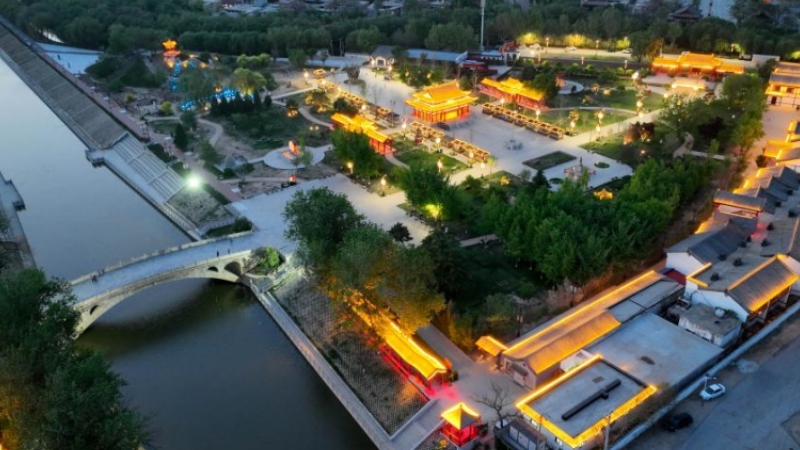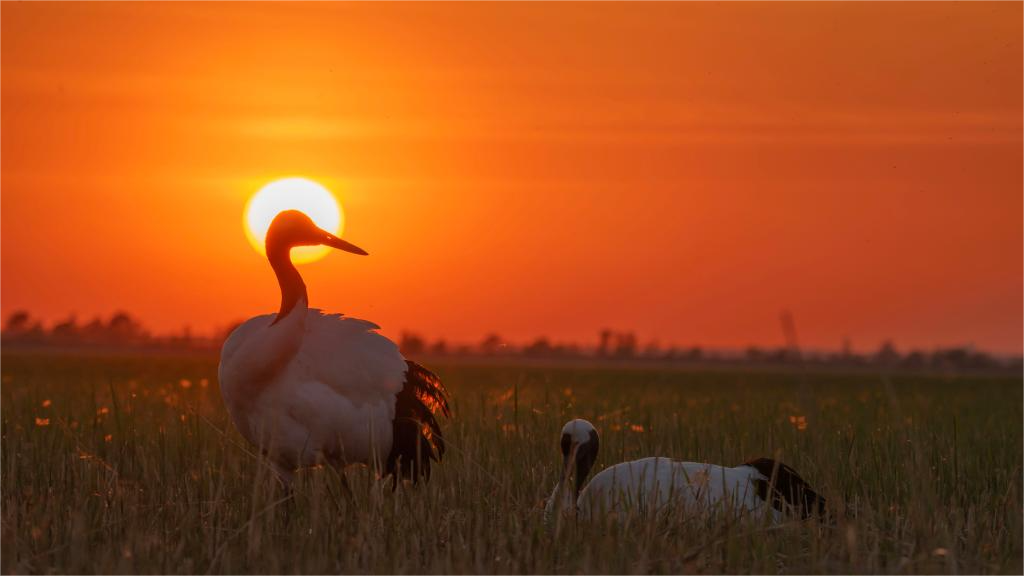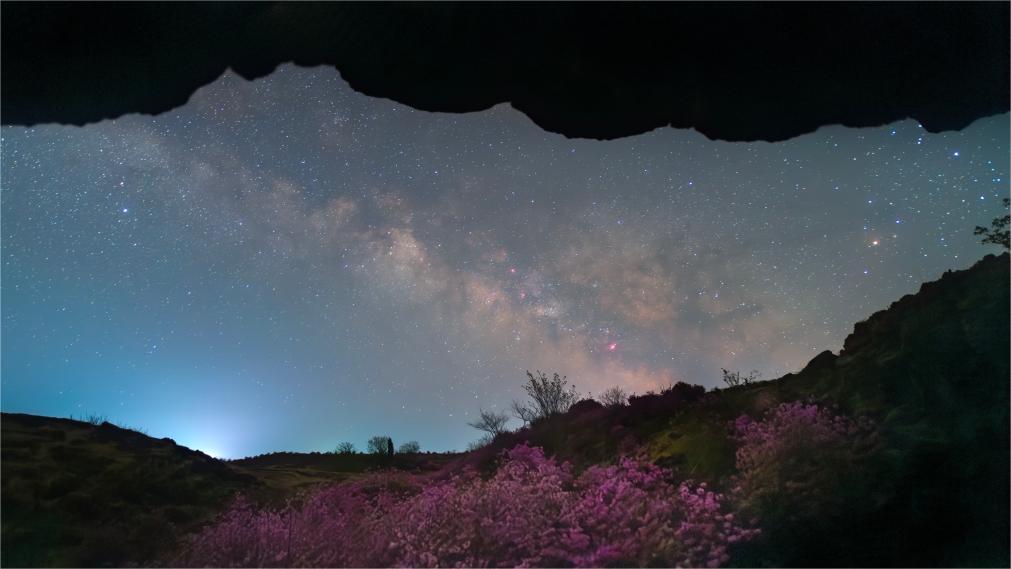Rescued leopard cat returned to wild habitat
Editor's Note: As protection of the planet's flora, fauna and resources becomes increasingly important, China Daily is publishing a series of stories to illustrate the country's commitment to safeguarding the natural world.
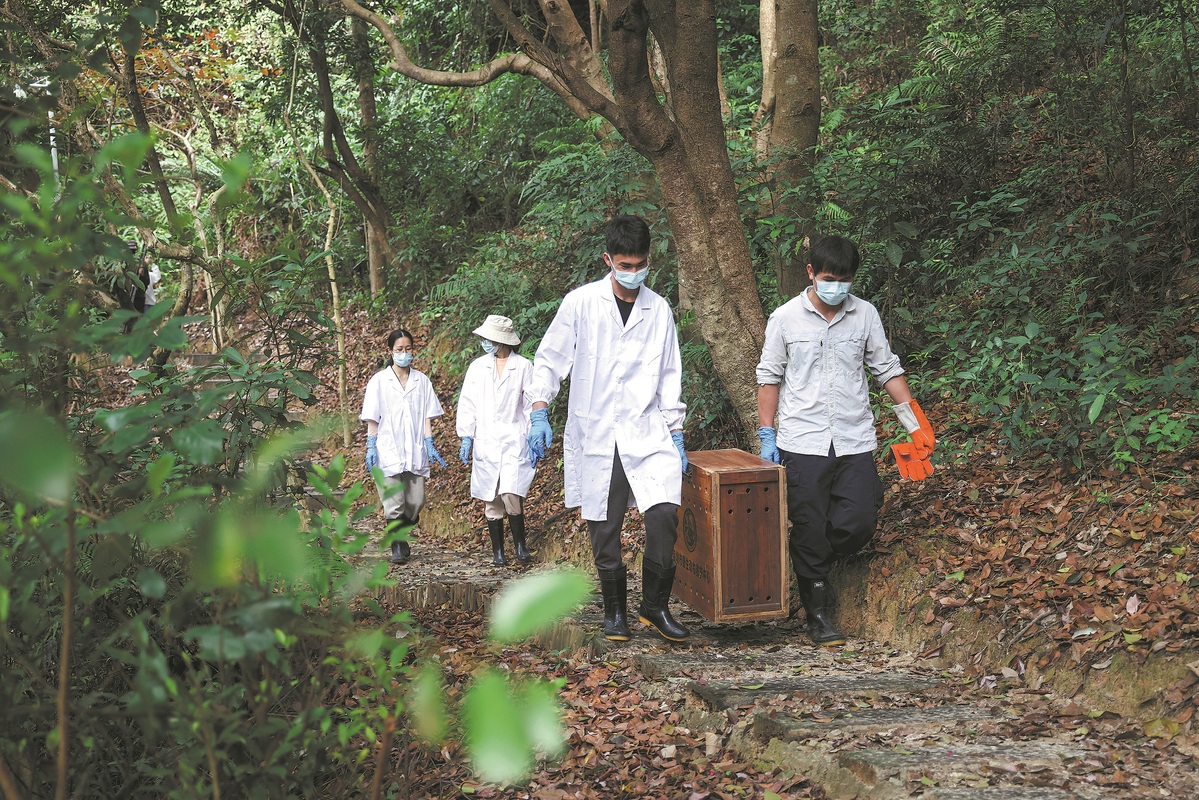
Animal workers take the leopard cat to Wutong Mountain in Shenzhen before its release. ZHU HONGBO/NANFANG DAILY
After spending 136 days at the Shenzhen Wildlife Rescue Center, a young leopard cat cub hesitated a moment, sniffing the air outside the door of its portable cage, before running into the woods of Wutong Mountain in Guangdong province on Feb 1.
On Sept 18, the newborn leopard cat, which is under second-class State protection, was found by a park worker in the city who'd noticed it struggling on its own. After a night of observation, waiting in vain for its mother to return, the animal workers from the rescue center decided to take it in.
At about a week old and still not teething, the 17-centimeter-long, 180-gram cub was the tiniest leopard cat rescued by the center.
"The cub was feeble and with low immunity, and we had to put it in an incubator," said Zheng Suqun, a veterinarian at the center. "We fed it goat's milk every two hours."
Some 20 days later, the cub was growing healthily and had been moved out of the incubator, and meat was added to its diet.
On Dec 2, it was transferred to a "wildness cage" where tree branches and vines were positioned to mimic a wild environment. "We tried not to make contact with the cub except for feeding, as we didn't want it to develop any attachment or dependence on humans," Zheng said.
By the end of December, the cub had begun a more comprehensive training period as it began to learn to hunt. "When it was able to prey on small, live animals such as chickens, mice and fish, and could stay vigilant enough to avoid risks, we could call its wildness training a success," said Zeng Zhiliao, a senior vet at the center, who ruled that the leopard cat was meeting the criteria to be released.
Zheng said: "We fed it a little more than usual before the release so that it could get through some time if it is unable to catch food straight away."
"I'm relieved and relaxed," she said as she watched the leopard cat return to the wild. "We've raised it well and made it able to live, have a habitat and hopefully procreate, and that's nice enough."
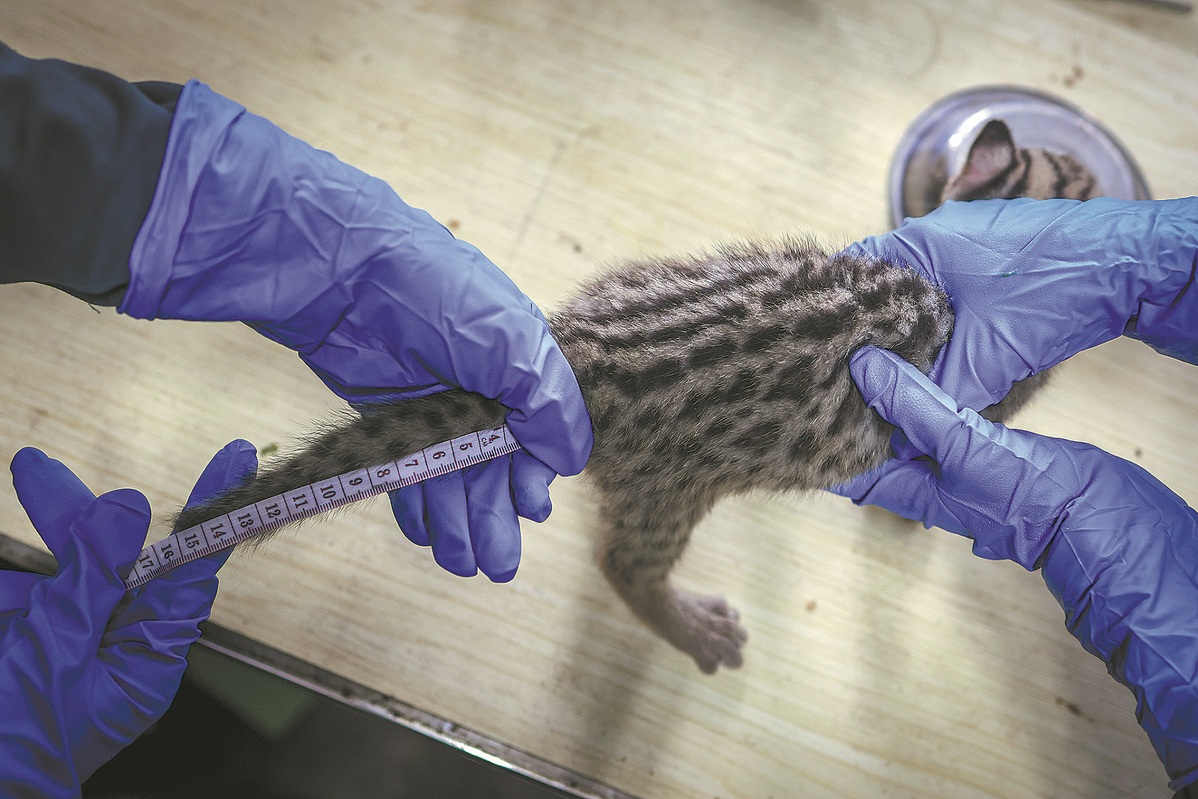
Veterinarians measure the length of the leopard cat's tail at Shenzhen Wildlife Rescue Center in Shenzhen, Guangdong province, on Oct 31. ZHU HONGBO/NANFANG DAILY
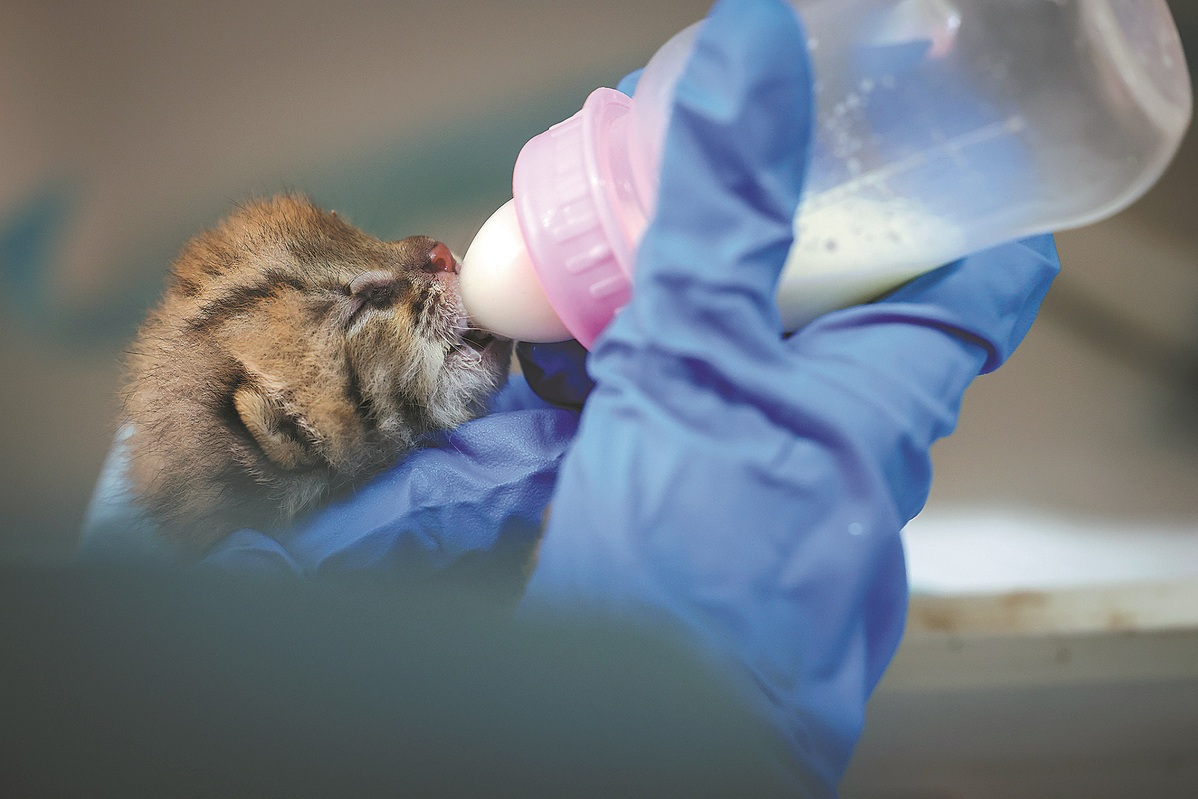
A vet feeds the leopard cat with goat's milk on Sept 20. ZHU HONGBO/NANFANG DAILY
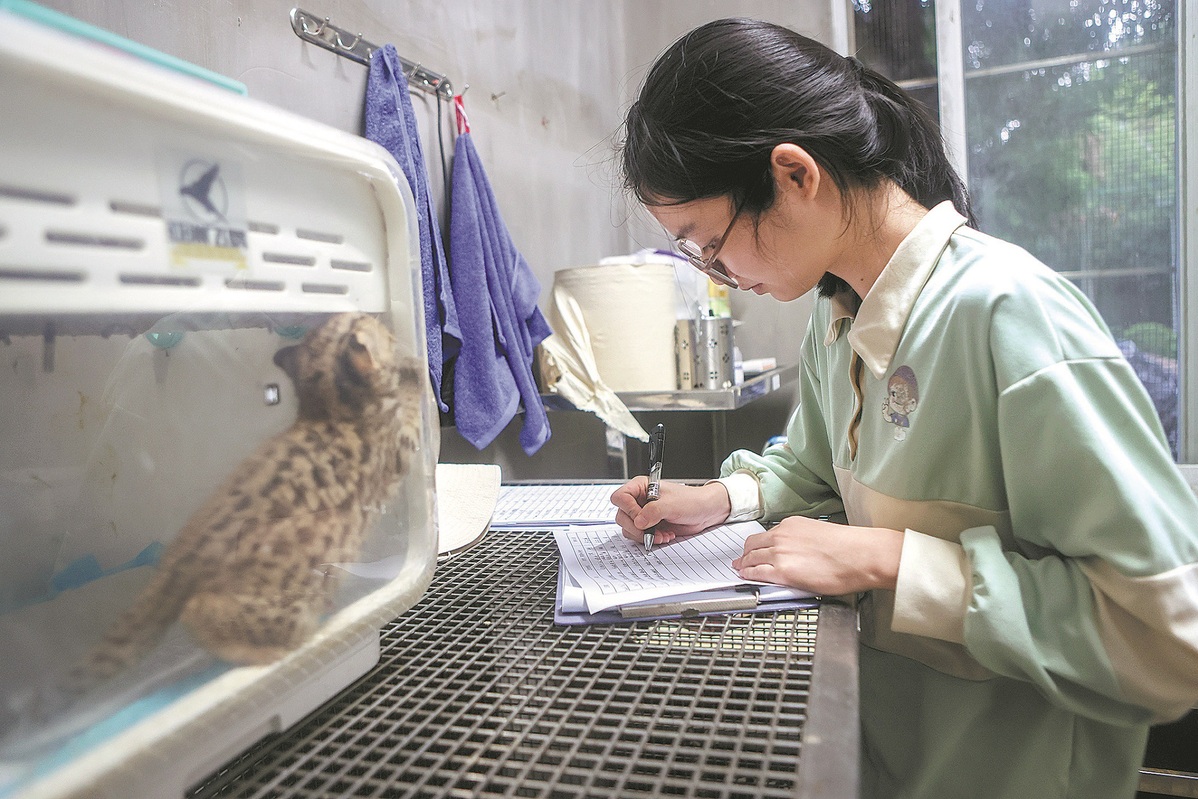
Vet Zheng Suqun checks on the health of the leopard cat on Oct 11. ZHU HONGBO/NANFANG DAILY
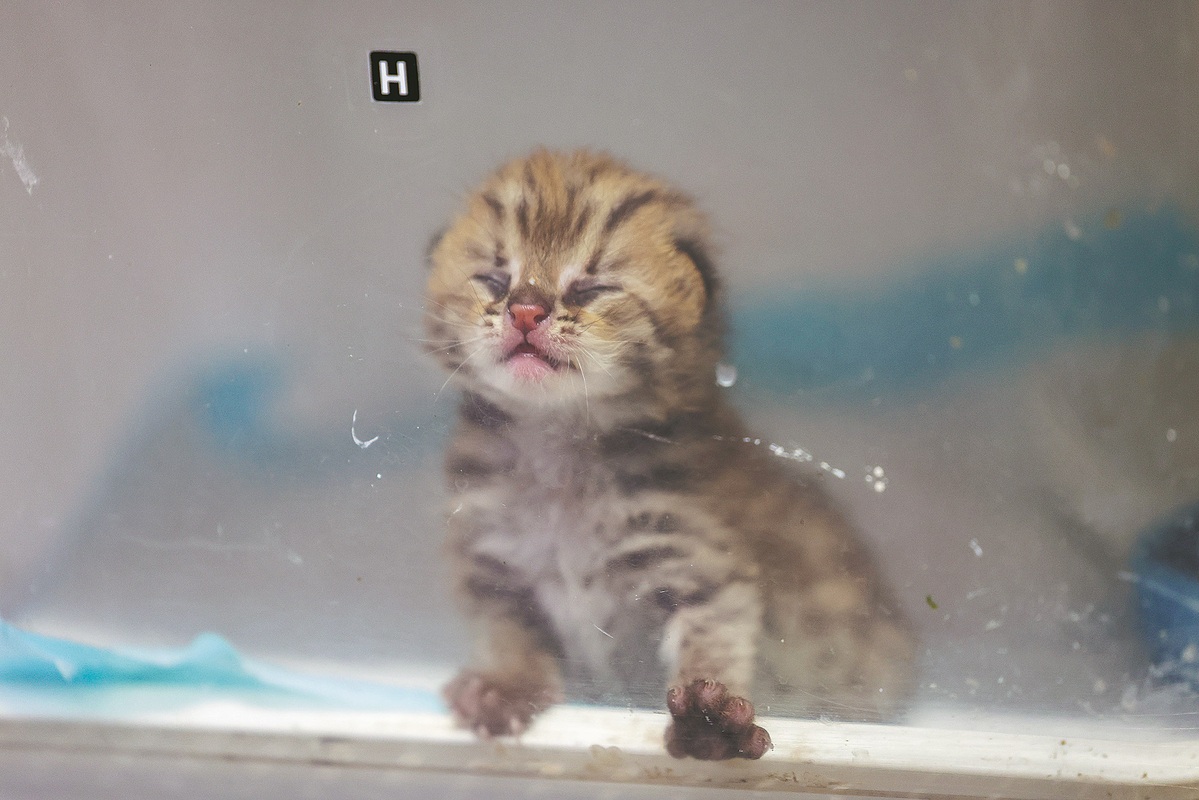
The cub, yet to open its eyes, wakes up in its incubator on Sept 20. ZHU HONGBO/NANFANG DAILY

The leopard cat learns to hunt a live chicken on Dec 2. ZHU HONGBO/NANFANG DAILY

At 4 months old, the leopard cat exhibits signs of a stronger physique and vigilance. ZHU HONGBO/NANFANG DAILY

The leopard cat peers into the forest upon its release on Feb 1. ZHU HONGBO/NANFANG DAILY
Photos
Related Stories
- Rare golden monkey born at China world heritage site
- NE China bay sees increasing migratory harbor seals
- Migratory birds rest at E China's nature reserve
- Rare birds spotted in north China's wetland
- Over 200,000 Chinese sturgeons released into Yangtze River
- In pics: red-crowned cranes at Zhalong National Nature Reserve in NE China
Copyright © 2024 People's Daily Online. All Rights Reserved.






